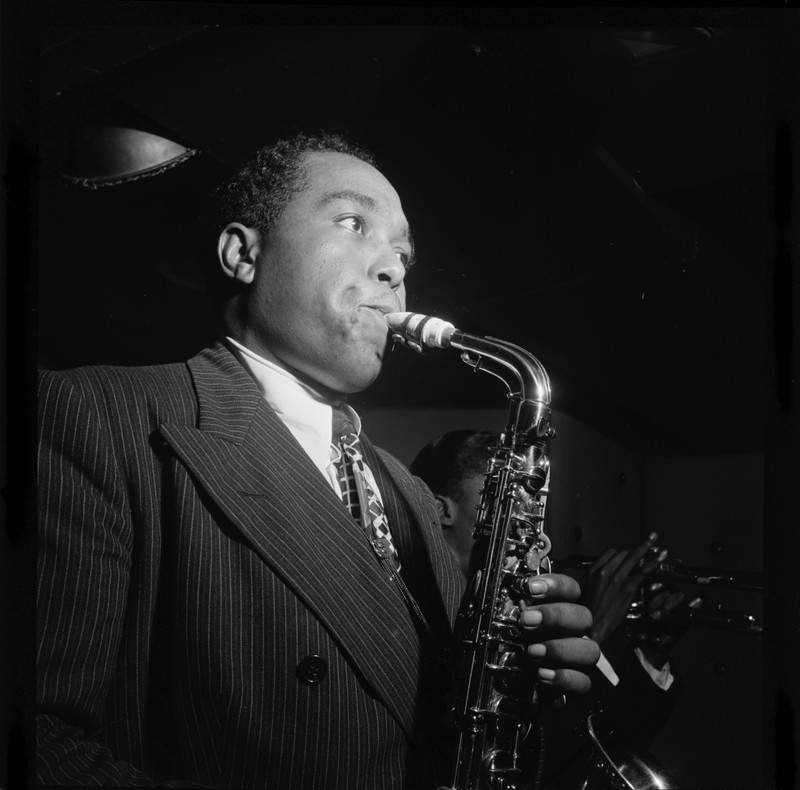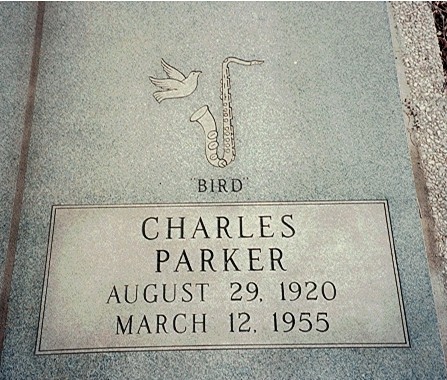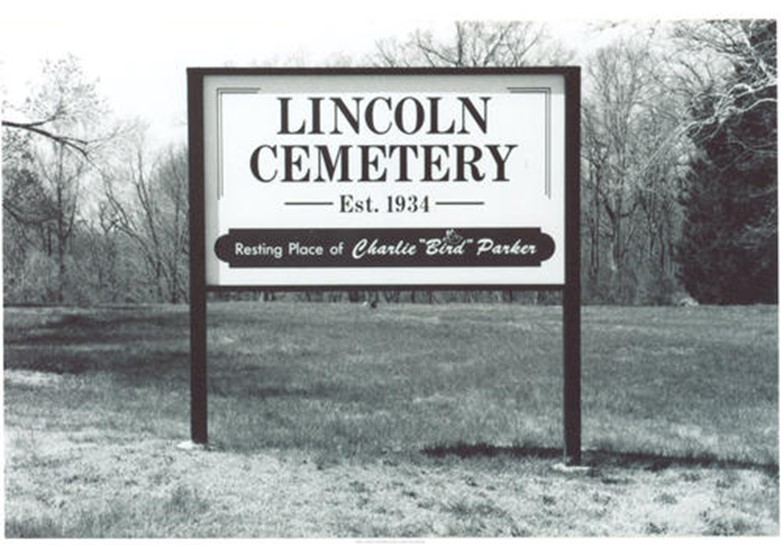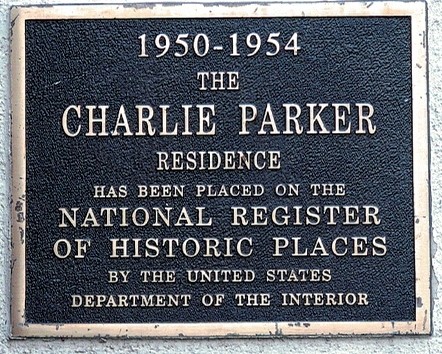Birthplace of Charlie Parker
Introduction
Text-to-speech Audio
Jazz Musician. Charles Christopher Parker, Jr., was born at this location on 29 August 1920 to Charles Parker, Sr., and Adelaide “Addie” Bailey. As a boy, Parker lived at this location for seven years before the family moved to a few other homes in Kansas City. Regarded by many as the most influential figure in modern jazz, Parker was one of the leading collaborators who created of a new style of playing called bop, or bebop. He began his career playing alto saxophone for various bands in his native Kansas City territory during the late 1930s and early 1940s, most notably with a group led by pianist Jay McShann. He later moved to New York but is buried in Lincoln Cemetery in the Kansas City metro area.
Images
Charlie Parker

Charlie Parker Memorial

Charles Parker headstone in Lincoln Cemetery

Lincoln Cemetery

Parker's last resident in Manhattan, NY

Backstory and Context
Text-to-speech Audio
Parker's father was African American and his mother was of mixed Choctaw and African American descent. Besides his birthplace at 852 Freeman Avenue, Parker also lived at: 3527 Wyandotte Street, Kansas City, MO, from 1927 to 1930, 109 West 34th St., KCMO, from 1930 to 1933, and 1535 Olive St., KCMO, from 1933 to 1939.
Parker attended Douglass Elementary School (kindergarten and first grade), Penn School (second grade thru sixth grade), Sumner School (seventh grade) in Kansas City, KS and Lincoln High School (eighth and ninth grades) in Kansas City, Missouri. However, never attended Crispus Attucks school, as cited by some sources. By the age of fifteen Parker, known as "Yardbird" or "Bird" because of his love of eating chicken, was married and had begun using drugs. In 1941 he became a member of pianist Jay McShann's (1916–) band, making his first commercial recordings.
Parker's earliest records reveal that he was already developing the more complicated musical approach that was characteristic of his mature work. This approach and his harsh tone made it difficult for the casual listener to follow the logic of his choruses. Also, with major changes taking place in the rhythm section, his music sometimes met with opposition or downright confusion. Parker played with extraordinary technical skill, which allowed him to express his ideas very clearly even at the most rapid tempo (the rate of speed of a musical piece).
Parker's music brought a generation of innovators along with him, among them visionaries such as drummers Max Roach and Kenny Clarke, pianists Thelonious Monk and Bud Powell, bassist Oscar Pettiford and singer-bandleader Billy Eckstine, whose banks included at times, Dizzy Gillespie, Fats Navarro, Miles Davis, Gene Ammons, Dexter Gordon, Art Blakey, and Sarah Vaughan.
At this time Parker also met and began performing with trumpet player Dizzy Gillespie (1917–1993), widely accepted as the cofounder with Parker of the jazz style that became known as bop or bebop (featuring complicated harmonies and quick tempos). In 1945 they recorded some of the greatest titles in the new style. Although younger musicians quickly realized Parker's genius, musicians who were older and more set in their ways did not approve of him or his playing. In 1946, as a result, Parker suffered a mental breakdown and was committed for six months to a sanitarium (an institution for rest and recovery). Upon his release he formed his own quintet (five-piece group) and performed with it for several years, mainly in the New York City area. He also toured with Norman Granz's "Jazz at the Philharmonic" and made trips to Paris, France, in 1949 and Scandinavia in 1950.
Parker composed a number of tunes that became jazz classics, though these were usually casually assembled items based on chord sequences of popular tunes. In terms of melodic skill, his recordings of ballads such as "Embraceable You" and "How Deep Is the Ocean" are even more revealing than his songs in the bebop style. Many other musicians imitated his playing, but his own achievements were unique.
Some of Parker's greatest hits include Meandering, Parker's Mood, Koko, A Night in Tunisia, Scrapple from the Apple, Hot House, Relaxin' at Camarillo, Billie's Bounce, Donna Lee, Barbados, Embraceable You, Ah-Leu-Chas, Cool Blues, Warming Up a Riff and Lover Man.
In the last five years of Parker's life, he was unable to work steadily as a result of physical and mental illness. On March 4, 1955, he made his final public appearance; he died eight days later in New York City on March 12th at the age of thirty-four.
Cite This Entry
Larry Lester on behalf of Black Archives of Mid-America and Clio Admin. "Birthplace of Charlie Parker." Clio: Your Guide to History. February 20, 2023. Accessed March 21, 2025. https://theclio.com/tour/991/13/reverse
Sources
Charlie Parker Biography, Encyclopedia of World Biography. Accessed February 19th, 2023. https://www.notablebiographies.com/Ni-Pe/Parker-Charlie.html.
Haddix, Chuck. Bird: the Life and Music of Charlie Parker. Edition First. Chicago, IL. University of Illinois Press, 2013.
Crouch, Stanley. Kansas City Lighting: The Rise and Times of Charlie Parker. Edition First. New York, NY. HarperCollins Publishers, 2013.
Vail, Ken. Bird's Diary. Edition First. Chessington, Surrey KT9 2NY, United Kingdom. Castle Communications PLC, 1996.
https://open.spotify.com/album/14S4igoqjl9HxaCCjNPxMf
https://upload.wikimedia.org/wikipedia/commons/8/82/Portrait_of_Charlie_Parker_in_1947.jpg
Larry Lester
Larry Lester
8604 East Truman Road in Kansas City, Missouri 64126
National Register Historic Places

